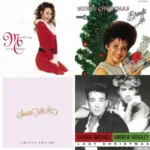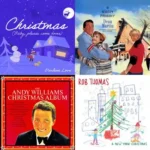Christmas songs are the heart and soul of the holiday season. They fill the airwaves, gather families around the fireplace, and bring a special kind of warmth and nostalgia to winter days. While we may know the words to these classics by heart, many of us don’t realize just how rich and surprising their backstories are. From unexpected origins and quirky controversies to meaningful messages and cultural twists, the history behind Christmas music is full of fascinating stories that add even more magic to the season.
Take the ever-popular “Jingle Bells.” Most people think of it as a quintessential Christmas tune, but it actually began life as a Thanksgiving song. Written by James Lord Pierpont in 1857 and originally titled “One Horse Open Sleigh,” it celebrated the fun of sleigh rides in the snow rather than Christmas itself. Its catchy melody and winter imagery, however, quickly led it to become a holiday staple. Today, it’s hard to imagine Christmas without hearing those joyful bells ringing.
“Silent Night,” one of the most beloved carols worldwide, also has a humble origin. Composed in Austria in 1818 by Franz Xaver Gruber with lyrics by Joseph Mohr, the song was first performed in a small village church where the organ was broken. To accompany the singers, Gruber played a simple guitar, creating a serene, intimate atmosphere. From that modest beginning, “Silent Night” spread across continents and languages, becoming a universal symbol of peace and quiet wonder during Christmas.
“White Christmas,” famously sung by Bing Crosby, holds the record as the best-selling single of all time, with over 50 million copies sold. The song was written by Irving Berlin, a composer who couldn’t read or write music but created melodies by ear. His heartfelt lyrics paint a nostalgic picture of a snowy holiday that has resonated with listeners for generations, reminding us all of the magic of Christmases past.
The story behind “Rudolph the Red-Nosed Reindeer” is an example of how Christmas culture continues to evolve. Rudolph wasn’t part of the traditional Christmas lore until 1939, when Robert L. May, a copywriter for the Montgomery Ward department store, created the character as part of a promotional booklet for children. The story of the glowing-nosed reindeer was an instant hit, eventually inspiring a song written by Johnny Marks and recorded by Gene Autry in 1949. Rudolph’s tale of being different yet beloved has become a heartwarming holiday classic.
Many Christmas songs were born in unexpected circumstances. “Let It Snow! Let It Snow! Let It Snow!” was penned by lyricist Sammy Cahn during a sweltering heatwave in July 1945. Despite never mentioning Christmas, its cozy imagery of snowy nights and warm fires has cemented it as a wintertime favorite. It’s a perfect reminder that holiday music can capture the season’s spirit without needing to mention the holiday explicitly.
Not every Christmas song was instantly beloved. “Santa Claus Is Coming to Town,” released in 1934, was once controversial enough to be banned in some schools and churches. The lyrics warning children that Santa was “watching you” were considered frightening by some parents. Luckily, those concerns faded quickly, and now the song is one of the most joyful and energetic holiday tunes, bringing excitement and anticipation to children and adults alike.
John Lennon and Yoko Ono’s “Happy Xmas (War Is Over),” released in 1971, stands apart as a protest song wrapped in the holiday spirit. Written during the Vietnam War, it calls for peace and reflects on the hope that Christmas can inspire positive change in the world. This song reminds us that Christmas music can carry powerful messages beyond simple celebration.
Elvis Presley’s “Blue Christmas,” originally written in 1948, takes a different emotional tone. It captures the loneliness and heartbreak that some experience during the holiday season—a poignant contrast to the usual upbeat carols. Elvis’s soulful delivery made the song a classic, giving voice to those who feel bittersweet during the festivities.
“The Twelve Days of Christmas” is a song layered with mystery and meaning. Some historians believe it originated as a secret catechism used by Catholics in England during times when practicing their faith was banned. Each gift in the song is thought to symbolize a religious teaching, cleverly hidden in a catchy, repetitive tune that children could memorize.
Not all Christmas carols are English in origin. “Carol of the Bells” has its roots in a Ukrainian folk song called “Shchedryk,” composed by Mykola Leontovych in 1916. Known for its hypnotic, repeating bell-like melody, it has become a hauntingly beautiful and instantly recognizable piece performed around the world.
During World War II, the song “I’ll Be Home for Christmas” captured the hearts of soldiers and their families. Written in 1943, it expresses a soldier’s yearning to be home with loved ones, even if only in dreams. This bittersweet tune remains a poignant reminder of the holiday’s deeper meaning—connection, hope, and togetherness.
Eartha Kitt’s “Santa Baby,” released in 1953, brought a playful and flirtatious edge to holiday music. Its cheeky lyrics, which include asking Santa for extravagant gifts, sparked some controversy at the time but have since become a beloved, tongue-in-cheek classic that adds variety to the holiday soundtrack.
A surprising fact about “Rockin’ Around the Christmas Tree” is that it was recorded by Brenda Lee when she was only 13 years old. Despite her youth, the song’s upbeat rockabilly vibe has made it a timeless favorite at holiday parties for decades.
Christmas music has also played a role in charity and social causes. The 1984 song “Do They Know It’s Christmas?” brought together some of the biggest British and Irish musicians as Band Aid to raise awareness and funds for famine relief in Ethiopia. This landmark charity single showed how Christmas music can unite people and make a real-world impact.
Not all holiday hits are old classics. The Waitresses’ 1981 song “Christmas Wrapping” offers a quirky, upbeat take on the holiday experience. Its story of someone trying to avoid the season’s chaos but ultimately embracing it resonates with many who find the holidays both hectic and joyful.
Finally, “Here Comes Santa Claus,” written by Gene Autry in 1947, was inspired by the excitement of the Santa Claus parade in Los Angeles. The song captures the magical moment of Santa’s arrival and has been spreading holiday cheer ever since.
These fascinating stories reveal that Christmas songs are much more than just catchy tunes. They carry history, culture, emotions, and even activism—all wrapped up in melodies that bring us together every December. The next time your favorite Christmas song plays on our station, remember there’s a rich story behind it, adding an extra layer of magic to your holiday listening.










